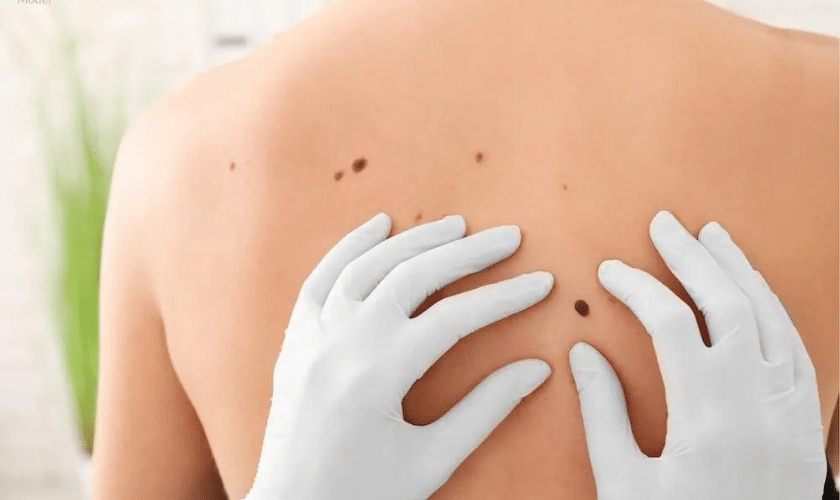Are you concerned about the rising cases of skin cancer and looking for effective treatment options? Look no further! In today’s blog post, we delve into the world of Mohs surgery, a groundbreaking procedure that has revolutionized skin cancer treatment. Get ready to uncover the secrets behind this cutting-edge technique as we unveil its astounding success rates, minimal scarring outcomes, and why it is hailed as one of the most reliable treatments available. Stay tuned to gain valuable insights into Mohs surgery – your ultimate weapon in combating skin cancer!
Understanding Skin Cancer:
Before delving into Mohs surgery, it’s crucial to grasp the gravity of skin cancer. Skin cancer occurs when skin cells undergo abnormal changes, typically due to prolonged exposure to ultraviolet (UV) radiation. The most common types are basal cell carcinoma, squamous cell carcinoma, and melanoma, with each necessitating distinct treatment approaches.
The Rise of Mohs Surgery:
Mohs surgery has evolved into a highly effective and precise technique for treating certain types of skin cancer. Unlike traditional excision methods, Mohs surgery is renowned for its ability to remove cancerous cells while sparing as much healthy tissue as possible.
The Mohs Surgery Process:
Tissue Removal: Mohs surgery begins with the removal of the visible tumor. Unlike other methods, only the minimal amount of tissue necessary is excised, reducing the impact on surrounding healthy skin.
Layer-by-Layer Examination: The excised tissue is divided into sections, and each layer is meticulously examined under a microscope. This process allows the surgeon to identify and map out any remaining cancer cells.
Precise Tumor Removal: The surgeon repeats the process layer by layer until no cancer cells are detected. This precision is particularly advantageous for tumors with irregular shapes or those located in cosmetically sensitive areas.
Preservation of Healthy Tissue: Mohs surgery excels in preserving healthy tissue, ensuring minimal scarring and better cosmetic outcomes. This is especially crucial for skin cancer on the face or other visible areas.
Advantages of Mohs Surgery:
High Cure Rates: Mohs surgery boasts some of the highest cure rates for skin cancer, exceeding 90% for certain types. The meticulous examination of tissue layers ensures that no cancerous cells are left behind.
Tissue Preservation: By selectively removing only cancerous tissue, Mohs surgery minimizes the loss of healthy skin. This is particularly vital for areas where preserving function and appearance is paramount.
Cosmetic Outcomes: The precision of Mohs surgery results in superior cosmetic outcomes compared to traditional excision methods. It is especially beneficial for skin cancers on the face, neck, and other visible areas.
In-Office Procedure: Mohs surgery is typically performed on an outpatient basis in a dermatologist’s office. Patients can often undergo the procedure and recovery in a single day.
Real-Time Assessment: The layer-by-layer examination allows for real-time assessment of the tumor margins, ensuring that the surgeon can immediately address any remaining cancer cells.
Conditions Suitable for Mohs Surgery:
While Mohs surgery is highly effective, it is typically reserved for specific situations, including:
Recurrent or Large Tumors: Mohs surgery is particularly beneficial when dealing with tumors that have recurred after previous treatment or those that are larger.
Cosmetically Sensitive Areas: Skin cancers on the face, neck, hands, and other cosmetically sensitive areas benefit from Mohs surgery’s ability to preserve healthy tissue and minimize scarring.
Aggressive or Ill-Defined Tumors: Tumors with aggressive features or ill-defined borders are well-suited for Mohs surgery, where the surgeon can precisely identify and remove cancerous cells.
High-Risk Types of Skin Cancer: Certain types of skin cancer, such as basal cell carcinoma and squamous cell carcinoma, especially those at high risk of recurrence, respond exceptionally well to Mohs surgery.
Recovery and Follow-Up:
The recovery process after Mohs surgery is typically straightforward. Patients may experience some discomfort or swelling, but this is generally minimal. The meticulous removal of cancerous cells and preservation of healthy tissue contribute to a quicker and smoother recovery.
Follow-up care is a crucial aspect of Mohs surgery. Regular check-ups allow the dermatologist to monitor the healing process, assess for any signs of recurrence, and provide guidance on sun protection to prevent future skin cancers.
Mohs surgery emerges as a beacon of hope in skin cancer treatment, celebrated for its high cure rates, minimal scarring, and exceptional cosmetic outcomes. This gold standard procedure, with its meticulous approach, not only effectively eradicates cancer but also prioritizes the preservation of function and appearance. As awareness grows and technology advances, Mohs surgery continues to evolve, offering a reassuring path to healing for individuals navigating the complexities of skin cancer. Embracing this innovative approach means not only defeating cancer but also ensuring a future marked by both health and aesthetic well-being.

